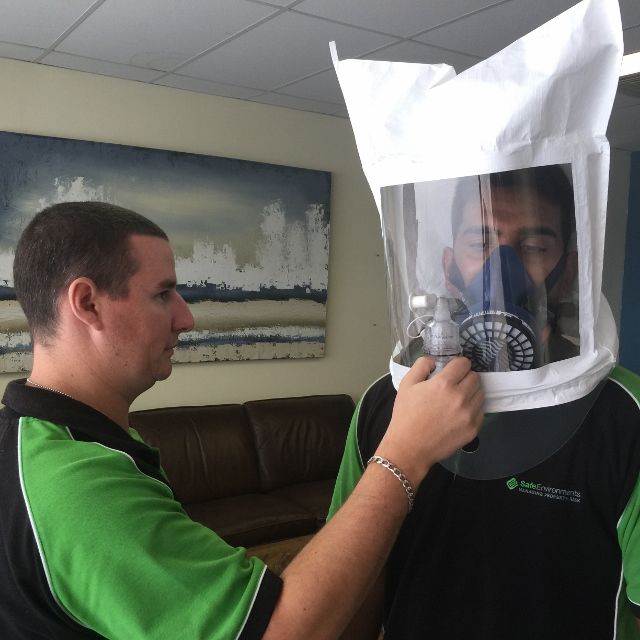
Safe Environments provide fit testing services for Respiratory Protective Equipment (RPE) to ensure that people are sufficiently protected from airborne asbestos fibres. In Australia, the beginning of the year is a good time to undertake those annual health and safety checks, including respirator fit testing.
Respirator fit testing is required for all Australian asbestos removalists to ensure that their respirator is working effectively when first placed on and undertaking certain movements.
It’s the main check to ensure that you aren’t being exposed to significant amounts of respirable asbestos fibres. The applicable Australian Standard for RPE fit testing is Australian/New Zealand Standard AS/NZS 1715:2009 – Selection, Use and Maintenance of Respiratory Protection.
How the Respirator Fit Testing is Conducted in Australia
There are two types of fit testing:
- Qualitative fit testing – which uses the test subject to detect particles in the air through taste; and
- Quantitative fit testing – which uses a device which measures the difference in airborne particles from inside and outside the respirator.
For qualitative fit testing, a solution of a bitrix or saccharin solution is first sprayed into the air at a low concentration to check that the test subject can detect the solution in the air through taste. This is called a sensitivity test, which is not required for qualitative fit testing
Before the actual test is conducted a fit check is required as a gross determination of the face seal integrity.
The Respirator Fit Check
A fit check is a quick rough guide to check the seal between the face and the respirator. This is conducted through a positive pressure test or a negative pressure fit check. The positive pressure fit check is conducted by the person closing off the exhaust valves or over the filter and breathing out. Positive pressure should be felt without a stream of air escaping around the face / respirator interface.
The negative pressure fit check is done in a similar manner except that the person closes off the inhalation valves and checks for air leaking in between the face and the respirator.
The Fit Test
For qualitative fit testing, a solution that is 100 times more concentrated than the sensitivity test solution is sprayed into a chamber or hood over the persons head. A number of tasks are conducted and the subject is asked whether they can taste the solution. If they can, then there is insufficient protection for the worker and another respirator may be required.
For the quantitative, a solution is sprayed into the air with a particle counter measuring the number of particles both inside and outside the chamber or hood. One type of machine that can do this is called a PortaCount. This difference in the number of particles can then be used to determine the protection factor of the respirator.
Contact Safe Environments to Conduct Fit Testing for your Company
Safe Environments can come to your workplace or onsite to provide Respiratory Fit Testing in both Sydney and Melbourne, or anywhere in Australia. The respiratory fit testing will provide documented evidence that you have reduced the level of exposure to respirable asbestos fibres.
Author: Carl Strautins

Email: info@SafeEnvironments.com.au
Carl Strautins is a managing director of Safe Environments Pty Ltd a multi-specialist consultancy operating in the building, construction and property management industries. He provides the necessary guidance and risk minimisation strategies required by architects, construction companies and facility managers to ensure they mitigated their risk to property risk. He is engaged on a regular basis to provide expert opinion for disputes and legal proceedings. Click here to know more about him.

